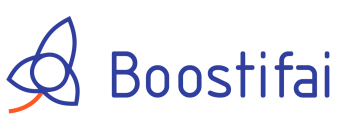Introduction to AI-driven Advertising
Definition and Overview
Definition and Overview AI-driven advertising techniques for internet marketing refer to the use of artificial intelligence (AI) technologies and algorithms to optimize and automate various aspects of online advertising campaigns. With the increasing complexity and volume of data available, AI has emerged as a powerful tool for marketers to enhance their advertising strategies and improve campaign performance. By leveraging AI, marketers can analyze vast amounts of data, identify patterns, and make data-driven decisions to target the right audience, personalize content, and optimize ad placements. AI-driven advertising techniques encompass a wide range of applications, including programmatic advertising, predictive analytics, natural language processing, and machine learning algorithms. These techniques enable marketers to streamline their advertising efforts, increase efficiency, and achieve better results in terms of reach, engagement, and conversion rates.
Benefits of AI in Advertising
The benefits of using AI in advertising are vast and impactful. Firstly, AI-driven advertising techniques enable marketers to gain deeper insights into consumer behavior and preferences. By analyzing vast amounts of data, AI algorithms can identify patterns and trends, allowing marketers to create highly targeted and personalized advertisements. Additionally, AI can optimize ad campaigns in real-time, automatically adjusting targeting, messaging, and placements to maximize effectiveness and return on investment. This not only saves time and resources but also ensures that ads are reaching the right audience at the right time. Furthermore, AI can enhance the customer experience by providing personalized recommendations and suggestions based on individual preferences and browsing history. Overall, leveraging AI in advertising empowers marketers to deliver more relevant and engaging content, resulting in improved campaign performance and customer satisfaction.
Role of AI in Internet Marketing
The role of AI in internet marketing has revolutionized the way businesses connect with their target audience. With the ability to analyze vast amounts of data in real-time, AI-powered advertising techniques have become invaluable tools for marketers. AI algorithms can identify patterns and trends in consumer behavior, enabling businesses to deliver personalized and targeted advertisements to the right audience at the right time. Moreover, AI can optimize ad campaigns by continuously learning and adapting to changing market dynamics, ensuring maximum return on investment. By leveraging AI in internet marketing, businesses can enhance customer engagement, improve conversion rates, and ultimately drive revenue growth.
Personalized Advertising with AI
Understanding User Behavior
Understanding user behavior is crucial for effective AI-driven advertising techniques in internet marketing. By analyzing user behavior, marketers can gain valuable insights into their target audience's preferences, interests, and purchasing patterns. This information allows them to create personalized and targeted advertisements that are more likely to resonate with users, leading to higher engagement and conversion rates. AI algorithms can analyze vast amounts of data, such as browsing history, search queries, and social media interactions, to identify patterns and predict user behavior accurately. With this understanding, marketers can optimize their advertising strategies, deliver relevant content to the right audience at the right time, and ultimately drive better results in their internet marketing campaigns.
Segmentation and Targeting
Segmentation and targeting are crucial aspects of AI-driven advertising techniques for internet marketing. By utilizing advanced algorithms and machine learning models, advertisers can effectively divide their target audience into distinct segments based on various characteristics such as demographics, interests, and online behavior. This segmentation allows marketers to tailor their advertising messages and campaigns to specific groups, ensuring that the right content reaches the right people at the right time. AI-powered tools can further enhance targeting efforts by continuously analyzing and refining audience segments, enabling advertisers to optimize their strategies and maximize the impact of their advertising campaigns. With the help of AI-driven segmentation and targeting techniques, businesses can achieve higher conversion rates, improved customer engagement, and ultimately, drive greater return on investment in their internet marketing endeavors.
Dynamic Ad Content Generation
Dynamic ad content generation is a cutting-edge technique in AI-driven advertising that revolutionizes internet marketing strategies. By leveraging advanced algorithms and machine learning models, advertisers can dynamically create and personalize ad content based on real-time data and user behavior. This approach enables marketers to deliver highly relevant and engaging advertisements that resonate with their target audience. With dynamic ad content generation, businesses can optimize their advertising campaigns by tailoring messages, images, and offers to individual users, resulting in increased click-through rates, conversions, and overall campaign success. This innovative approach to ad content generation not only enhances the effectiveness of internet marketing but also provides a seamless and personalized user experience, ultimately driving business growth and customer satisfaction.
AI-powered Ad Placement and Optimization
Automated Ad Placement
Automated ad placement is a cutting-edge technique that leverages artificial intelligence (AI) to optimize the process of displaying advertisements on the internet. By utilizing AI algorithms, advertisers can now automatically identify the most relevant websites, platforms, and social media channels to place their ads, ensuring maximum visibility and engagement with their target audience. This technology not only saves time and effort but also enhances the effectiveness of internet marketing campaigns by delivering personalized ads to the right users at the right time. With automated ad placement, advertisers can achieve higher conversion rates and better return on investment, making it an indispensable tool in the ever-evolving landscape of internet marketing.
Real-time Bidding and Programmatic Advertising
Real-time bidding (RTB) and programmatic advertising have revolutionized the world of internet marketing. RTB is a method of buying and selling online ad impressions in real-time auctions, allowing advertisers to bid on ad space based on specific targeting criteria. This automated process enables advertisers to reach their target audience more effectively and efficiently, as it eliminates the need for manual negotiations and streamlines the ad buying process. Programmatic advertising, on the other hand, refers to the use of software and algorithms to automate the buying, placement, and optimization of digital ads. By leveraging AI-driven technologies, programmatic advertising enables marketers to deliver highly personalized and relevant ads to consumers at the right time and on the right platforms. This combination of real-time bidding and programmatic advertising empowers advertisers to maximize their ad spend, improve campaign performance, and ultimately drive better results in the ever-evolving landscape of internet marketing.
Ad Campaign Optimization
Ad Campaign Optimization plays a crucial role in maximizing the effectiveness and efficiency of AI-driven advertising techniques for internet marketing. By continuously monitoring and analyzing various metrics such as click-through rates, conversion rates, and customer engagement, advertisers can fine-tune their ad campaigns to deliver better results. AI algorithms can automatically identify patterns and trends in user behavior, allowing marketers to optimize targeting strategies, ad placements, and messaging. This iterative process of optimization ensures that advertising efforts are constantly refined and tailored to reach the right audience at the right time, ultimately driving higher engagement, conversions, and return on investment.
Enhancing Ad Performance with AI
Predictive Analytics for Ad Performance
Predictive analytics has emerged as a powerful tool for enhancing ad performance in the realm of internet marketing. By leveraging advanced algorithms and machine learning techniques, advertisers can now analyze vast amounts of data to predict the effectiveness of their ads before they are even launched. This enables them to make data-driven decisions and optimize their advertising strategies for maximum impact. Predictive analytics not only helps in identifying the most relevant target audience but also aids in determining the optimal timing, placement, and messaging of ads. By harnessing the power of AI-driven predictive analytics, advertisers can significantly improve their ad performance, increase conversion rates, and ultimately achieve higher returns on their marketing investments.
Ad Fraud Detection and Prevention
Ad Fraud Detection and Prevention Ad fraud has become a significant concern in the realm of internet marketing, as it undermines the effectiveness and integrity of advertising campaigns. However, with the advent of AI-driven advertising techniques, there is now a powerful tool available for detecting and preventing ad fraud. AI algorithms can analyze vast amounts of data in real-time, identifying patterns and anomalies that may indicate fraudulent activities such as click fraud, impression fraud, or bot traffic. By leveraging machine learning and predictive modeling, AI can continuously learn and adapt to new fraud techniques, staying one step ahead of fraudsters. Moreover, AI can also aid in preventing ad fraud by implementing proactive measures such as CAPTCHA tests, IP filtering, and user behavior analysis. With AI-driven ad fraud detection and prevention, marketers can safeguard their advertising investments, ensure genuine user engagement, and maintain the trust of their target audience.
Optimizing Ad Budget Allocation
Optimizing Ad Budget Allocation is a crucial aspect of AI-driven advertising techniques for internet marketing. With the help of artificial intelligence, marketers can now efficiently allocate their ad budgets to maximize their return on investment (ROI). AI algorithms analyze vast amounts of data, including user behavior, demographics, and market trends, to identify the most effective advertising channels and target audiences. By leveraging this technology, marketers can ensure that their ad budgets are allocated to the right platforms, at the right times, and to the right audience segments. This optimization process not only enhances the overall efficiency of advertising campaigns but also enables marketers to achieve higher conversion rates and better engagement with their target customers. Ultimately, optimizing ad budget allocation through AI-driven techniques empowers marketers to make data-driven decisions and achieve optimal results in their internet marketing efforts.
AI-driven Ad Creatives and Design
Automated Ad Design
Automated ad design is a cutting-edge technique that leverages artificial intelligence (AI) to create visually appealing and engaging advertisements for internet marketing. By utilizing AI algorithms, businesses can automate the entire ad design process, from selecting the most suitable images and fonts to determining the optimal layout and color scheme. This technology enables marketers to save valuable time and resources that would otherwise be spent on manual design tasks. Additionally, automated ad design ensures consistency across multiple ad campaigns, maintaining a cohesive brand image. With the ability to analyze vast amounts of data and consumer preferences, AI-driven ad design can generate highly personalized and targeted advertisements, increasing the likelihood of capturing the attention of the intended audience and driving conversions.
A/B Testing with AI
A/B testing with AI is a powerful technique that allows marketers to optimize their advertising campaigns by comparing two or more variations of an ad to determine which one performs better. By leveraging AI algorithms, this process becomes more efficient and accurate, as the technology can quickly analyze vast amounts of data and identify patterns and trends that humans might miss. AI-driven A/B testing can help marketers make data-driven decisions, such as selecting the most effective ad copy, images, or call-to-action buttons, ultimately leading to higher conversion rates and improved return on investment. Additionally, AI can continuously learn and adapt based on user behavior, enabling marketers to refine their campaigns in real-time and deliver personalized experiences to their target audience.
Emotion and Sentiment Analysis in Ad Creatives
Emotion and sentiment analysis in ad creatives play a crucial role in enhancing the effectiveness of AI-driven advertising techniques for internet marketing. By leveraging advanced algorithms and machine learning models, advertisers can now analyze the emotional and sentiment impact of their ad campaigns on target audiences. This analysis enables marketers to understand how their ads are perceived and received by consumers, allowing them to tailor their messaging and creative elements accordingly. By incorporating emotion and sentiment analysis into ad creatives, advertisers can create more personalized and engaging content that resonates with their audience on a deeper level, ultimately leading to improved brand awareness, customer engagement, and conversion rates.
Ethical Considerations in AI Advertising
Transparency and Privacy
Transparency and privacy are crucial considerations when it comes to AI-driven advertising techniques for internet marketing. As AI algorithms become more sophisticated and capable of collecting and analyzing vast amounts of user data, it is essential for advertisers to prioritize transparency in their practices. This means providing clear and concise information to users about how their data is being collected, stored, and used for targeted advertising purposes. Additionally, ensuring user privacy is of utmost importance, as it builds trust and confidence in the advertising ecosystem. Advertisers must adhere to strict privacy regulations and implement robust security measures to safeguard user information. By prioritizing transparency and privacy, AI-driven advertising techniques can effectively engage users while respecting their rights and preferences.
Bias and Discrimination
Bias and discrimination are critical issues that arise when implementing AI-driven advertising techniques for internet marketing. While AI algorithms have the potential to optimize ad targeting and personalize content for users, they can also inadvertently perpetuate biases and discriminatory practices. This occurs when the algorithms are trained on biased data or when they learn from historical patterns that reflect societal prejudices. For instance, if an AI algorithm is trained on data that predominantly represents a certain demographic group, it may inadvertently exclude or marginalize other groups. This can lead to discriminatory outcomes, such as showing ads predominantly to a specific race or gender, while neglecting others. Therefore, it is crucial for marketers and developers to be aware of these biases and actively work towards mitigating them to ensure fair and inclusive advertising practices in the digital realm.
Regulatory Compliance
Regulatory compliance is a crucial aspect to consider when implementing AI-driven advertising techniques for internet marketing. As the use of artificial intelligence continues to evolve, it is essential for businesses to adhere to relevant laws and regulations to ensure ethical and responsible practices. Compliance with data protection and privacy laws, such as the General Data Protection Regulation (GDPR) in the European Union, is paramount to safeguarding user information and maintaining trust. Additionally, businesses must also consider regulations related to advertising standards, transparency, and fair competition to ensure that AI-driven advertising campaigns are conducted in a lawful and ethical manner. By prioritizing regulatory compliance, businesses can not only avoid legal repercussions but also build a positive reputation and foster long-term customer relationships based on trust and transparency.





